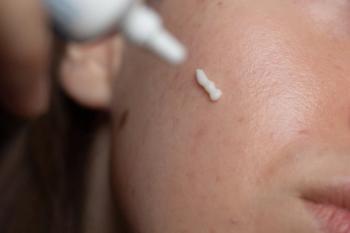
Q&A Part 1: Reviewing the Significance of Lebrikizumab for Patients With Skin of Color, With Anabela Cardoso, MD
Anabela Cardoso, MD, shares data from the phase 3b ADmirable trial—the first study to evaluate the safety and efficacy of lebrikizumab in patients with moderate to severe AD and pigmented skin.
At the
In an interview with Dermatology Times, Anabela Cardoso, MD, senior vice president of immunology medical affairs at Eli Lilly, reviewed the key data from the study, the significance of its evaluation of lebrikizumab in patients with skin of color, and what clinicians need to know from the results.
Q: Can you please provide an overview of the late-breaking lebrikizumab data presented at RAD 2025?
A: The study we presented was the first dedicated study to evaluate the efficacy and the safety of lebrikizumab, our IL-13 inhibitor, in adults and adolescents older than 12 with moderate to severe atopic dermatitis, as per the labeling indication, but with a particular characteristic of being patients with pigmented skin. We included patients with darker skin tones in this study, using the Fitzpatrick Skin Type scale. We did this study because often these patients with diverse skin tones are underrepresented in clinical trials—that was number one.
We also did this study because darker skin can sometimes mask how to assess atopic dermatitis. As an example, atopic dermatitis is a disease where having the redness in the skin matters for the severity, but in a darker tone, it’s hard to see red, so it can be a little bit underappreciated.
The third reason for this study is that not only can atopic dermatitis be underappreciated, but often the disease has different levels of severity in people with darker skin tones.
So, those reasons led us to do this trial, and we are very excited to have presented it for the first time with the 24-week data at RAD.
Q: What key data points would you point out to clinicians?
A: First, patients improved at 16 weeks, but also continued to improve at 6 months. So, it shows that early improvement, but it is sustained. Second, we saw approximately 78% of patients experience a significant improvement in their skin, severity, and extent, so EASI 75, which is a remarkable result and very consistent with the results of lebrikizumab in the pivotal trials.
We also looked at the different skin tones, and for people with the darkest skin tone, the results were even higher. Approximately 88% presented with that EASI 75 improvement at week 24.
Other important data is that approximately 60% also improved meaningfully in their itch, which is the other important component of atopic dermatitis. It's the skin and the itch that are so bothersome. So, 60% achieved at least a 4-point improvement in the itch.
We also applied a new scale, which is called PDCA Derm, and what it is is the scale that looks at post-inflammation hyperpigmentation or hypopigmentation. So, if patients have that, the scale measures how this moves—does hyperpigmentation get better, or does the skin get hypopigmented?
You can imagine, this is important for everyone, but even more so if we are talking about darker skin. The darker skin can become hyperpigmented, and that’s an issue on the darker skin.
With this new scale developed for the trial, approximately two-thirds of the patients saw an improvement in either hyper- or hypopigmentation, which is an important component of the improvement in atopic dermatitis.
There were no safety concerns. Safety was very consistent with the profile.2 These are the key reasons why we did it, and the key results, which we feel proud of, because it really addresses a patient population that continues to be underrepresented.
Q: What is the significance of this study focusing on patients with skin of color?
A: These patients are not very well represented in clinical trials, but most importantly, clinically, they can present differently. The disease can even be underdiagnosed. There are some data that show there’s a delay in the diagnosis of people with darker skin tones, and then there’s a delay in assessing the severity, and often, the severity is higher than in lighter skin.
So, these all make this subgroup of patients relevant and important to know if a medicine like lebrikizumab, which works in general as a first-line therapy, would also work as a first-line therapy in these patients. This was one of the main reasons.
The second reason is the prevalence. Not just today, but in the years to come, in the United States—which is a country made of people coming from all over the world—we anticipate that approximately 50% of the population will either be American Indian, Black, African American, Asian, or Pacific Islands, which are all people that were represented in this trial, and may pose those challenges.
It’s important. It even highlights further the need to invest in this type of clinical research, because it’s an important part of the population of this country.
References
- Alexis A, Moiin A, Waibel J, et al. Efficacy and safety of lebrikizumab in adult and adolescent patients with skin of color and moderate-to-severe atopic dermatitis: final 24-week results from the phase 3b, open-label ADmirable study. Presented at: 2025 Revolutionizing Atopic Dermatitis (RAD) Conference; June 6-7, 2025; Nashville, TN.
- Lilly's Ebglyss (lebrikizumab-lbkz) single monthly maintenance injection achieved completely clear skin at 3 years in half of patients with moderate-to-severe atopic dermatitis. News release. Eli Lilly. March 7, 2025. Accessed June 19, 2025.
https://investor.lilly.com/news-releases/news-release-details/lillys-ebglyssr-lebrikizumab-lbkz-single-monthly-maintenance
Stay tuned to part 2 of Cardoso’s interview discussing specific data points from ADmirable.
Newsletter
Like what you’re reading? Subscribe to Dermatology Times for weekly updates on therapies, innovations, and real-world practice tips.


















